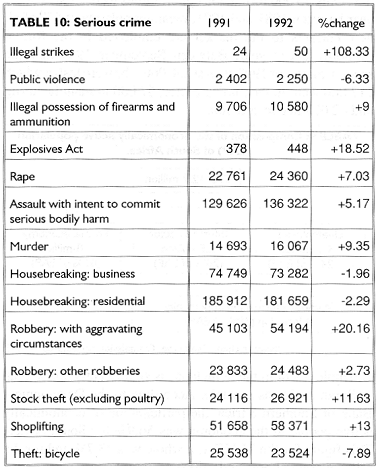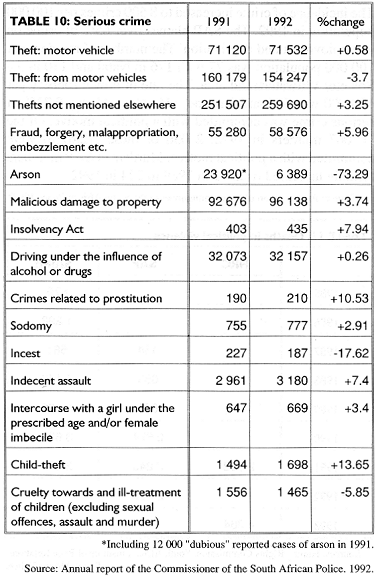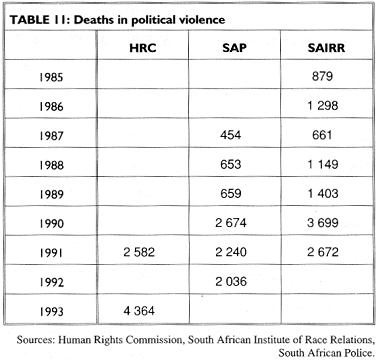- Contents
- O'Malley's political interviews
- Padraig O'Malley
- Pre-Transition (1902-1989)
- Transition (1990 - 1994)
- Post-Transition (1994 - 1999)
- Chronologies
- Commentary
- Constitution Making
- The Making of the Constitution
- Final Constitution of the Republic of South Africa 1996
- Explanatory Memorandum
- Preamble
- Chapter 1 - Founding Provisions
- Chapter 2 - Bill of Rights
- Chapter 3 - Co-operative Government
- Chapter 4 - Parliament
- Chapter 5 - The President and National Executive
- Chapter 6 - Provinces
- Chapter 7 - Local Government
- Chapter 8 - Courts and Administration of Justice
- Chapter 9 - State Institutions Supporting Constitutional Democracy
- Chapter 10 - Public Administration
- Chapter 11 - Security Services
- Chapter 12 - Traditional Leaders
- Chapter 13 - Finance
- Chapter 14 - General Provisions
- Index
- Schedule 1 - National Flag
- Schedule 2 - Oaths and Solemn Affirmations
- Schedule 3 - Election Procedures
- Schedule 4 - Functional Areas of Concurrent National and Provincial Legislative Competence
- Schedule 5 - Functional Areas of Exclusive Provincial Legislative Competence
- Schedule 6 - Transitional Arrangements
- Schedule 7 - Laws Repealed
- Demography and Economy
- Regional inequality in South Africa: Issues, measurements and policy implications
- Growth, Employment And Redistribution - A Macroeconomic Strategy 1996
- 1 Introduction
- 2 Critical Considerations: A Framework For Growth
- 3 Fiscal Policy
- 4 Monetary And Exchange Rate Policy
- 5 Trade, Industrial And Small Enterprise Policies
- 6 Social And Sectoral Policies
- 7 Public Investment And Asset Restructuring
- 8 Employment, Wages And Training
- 9 Towards A National Social Agreement
- 10 Policy Coordination
- Appendices
- RDP - White Paper
- Statistics
- Documents and Reports
- Truth and Reconciliation Commission
- Amnesty Applications
- Amnesty Hearings
- Assassinations
- Bisho Massacre
- Boipatong Massacre
- Name: Victor Mthandeni Mthembu
- Name: Vincent Kusahusa Khanyile
- Name: Mplupeki S Tshabangu
- Name: Timothy Stals Mazibuko
- Name: Sonny Michael Mkwanazi
- Name: Richard Dlamini
- Name: Paulos Mcikeleni Mbatha
- Name: Andries Matanzima Nosenga
- Name: Machihlile Wilson Baloyi - Witness
- Name: Thabo Johannes Rahantlhane - Witness
- Name: Miriam Molete - Witness
- Name: Florence Molete - Witness
- Name: Anna Mbatha - Witness
- Ruling
- Security Council Hearings
- Witness Hearings
- Submissions
- ANC
- African National Congress: Statement to the Truth and Reconciliation Commission - August 1996
- Executive Summary
- 1. Preface
- 2. Introduction
- 3. The Historical and International Context
- 4. The National Party, Apartheid and the Anatomy of Repression in South Africa, 1948-1994
- 5. The ANC: Stages of Struggle and Policy Foundations, 1960-1994
- 6. Did the ANC Perpetuate any Gross Violations of Human Rights
- 7. Conclusion: Reconciliation, Reparations and the Challenges for the Future
- Questions which require the attention of the Commission
- Further Submissions and Responses by the ANC to Questions raised by the Commission for Truth and Reconciliation - 12 MAY 1997
- Transcript of the ANC Party Political Recall in Cape Town: 12-13 May 1997
- African National Congress: Statement to the Truth and Reconciliation Commission - August 1996
- COSATU
- Freedom Front
- FXI
- NP
- ANC
- TRC Reports
- Commentary
- An overview of the conflict - TRC
- Complaints to Public Protector of TRC Handling of SADF
- Issues with TRC Findings
- Period following Mandela's Release - TRC excerpts
- ANC general proves truth can bring reconciliation
- Masondo apologises for Seremane's death
- Patrick Laurence - Focus - 30 June 2003
- The Truth About The Truth Commission
- I. Foreword
- II. Overview
- III. Introduction
- IV. Publication Of The Current TRC Report
- V. The Need For Factual Evidence
- VI. The Need For Comprehensive Findings
- VII. The Need For Objective Operation
- VIII. The Need For Violations To Be Contextualised
- IX. The Need To Accord With Established Legal Principles
- X. Findings Based On A 'Balance Of Probabilities'
- Appendix
- Bibliography
- The Report Of The Truth And Reconciliation Commission
- Summary and Guide to Contents
- Volume 1
- Chapter 1: Foreword by Chairperson
- Chapter 2: Historical Context
- Chapter 3: Setting up the Commission
- Chapter 4: The Mandate
- Chapter 5: Concepts and Principles
- Chapter 6: Methodology and Process
- Chapter 7: Legal Challenges
- Chapter 8: The Destruction of Records
- Chapter 9: Report of the Chief Executive Officer and Chief Accounting Officer
- Chapter 11: Management and Operational Reports
- Chapter 12: Regional Office Reports
- Chapter 13: Chronology of Apartheid Legislation1
- Volume 2
- Chapter 1: National Overview
- Chapter 2: The State outside South Africa between 1960 and 1990
- Chapter 3: The state inside South Africa between 1960 and 1990
- Chapter 4: The Liberation Movements from 1960 to 1990
- Chapter 5: The Homelands from 1960 to 1990
- Chapter 6: Special Investigation into the death of President Samora Machel
- Chapter 7: Political Violence in the Era of Negotiations and Transition, 1990-1994
- Volume 3
- Volume 4
- Chapter 1: Foreword and Context of Institutional and Special Hearings
- Chapter 2: Institutional Hearing: Business and Labour
- Chapter 3: Institutional Hearing: The Faith Community
- Chapter 4: Institutional Hearing: The Legal Community
- Chapter 5: Institutional Hearing: The Health Sector
- Chapter 6: Institutional Hearing: The Media
- Chapter 7: Institutional Hearing: Prisons
- Chapter 8: Special Hearing: Compulsory Military Service (Conscription)
- Chapter 9: Special Hearing: Children and Youth
- Chapter 10: Special Hearing: Women
- Volume 5
- Chapter 1: Analysis of Gross Violations of Human Rights
- Chapter 2: Victims of gross violations of human rights
- Chapter 3: Interim Report of the Amnesty Committee
- Chapter 4: Consequences of Gross Violations of Human Rights
- Chapter 5: Reparation and Rehabilitation Policy
- Chapter 6: Findings and Conclusions
- Chapter 7: Causes, Motives and Perspectives of Perpetrators1
- Chapter 8: Recommendations
- Chapter 9: Reconciliation
- Appendices
- Commentary
- Transformation (1999-)
- General Information
- Mac Maharaj
This resource is hosted by the Nelson Mandela Foundation, but was compiled and authored by Padraig O’Malley. It is the product of almost two decades of research and includes analyses, chronologies, historical documents, and interviews from the apartheid and post-apartheid eras.
Crime and violence
South African Police (SAP) statistics indicate 1 781 861 cases of serious crime were reported in 1992 outside the TBVC, of which 53.2% were solved. Details of reported serious crimes in 1992 were as follows:


The incidence of crime increased to 8 500 crimes per 100 000 population in 1992. The SAP blames over 65% of crime on unemployment and deprivation. The number of murders per 100 000 population was 77 with 176 in Natal and 110 in the Soweto/ Witwatersrand area. The rate of armed robbery per 100 000 was 375 and for rape, 116. The SAP say 0.72% of serious crime was committed with a political motive. Of the 16 067 murders in 1992, 2 036 of these (12.67%) were committed with a political motive. Murders of SAP members steadily increased from 71 in 1989 to 224 in 1992.
Source: Annual report of the Commissioner of the South African Police 1992.
